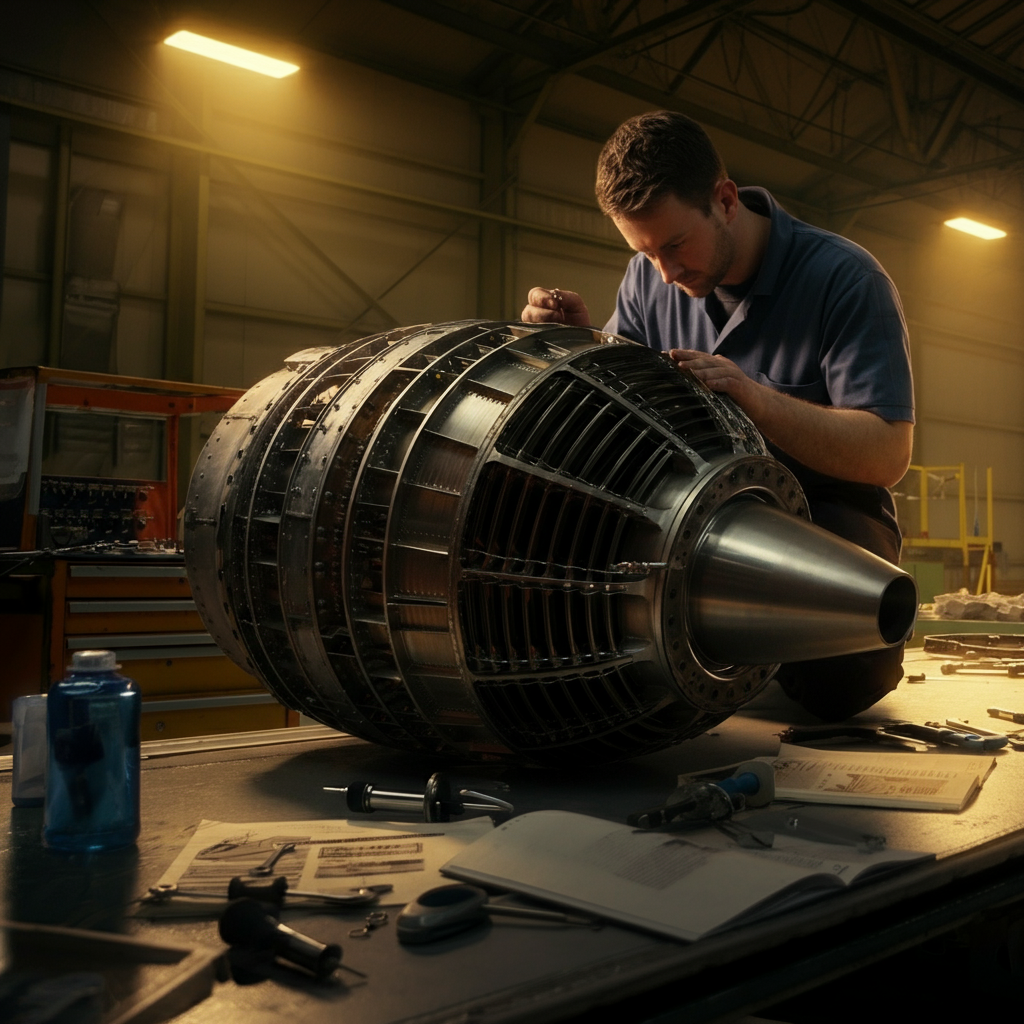Repair of Baffles Aviation: A Complete Guide

Repair of baffles aviation that allow for the regulation of engine temperature and airflow in addition to ensuring structural stability. Damage to these components could cause safety concerns, lower performance, and overheating. Maintaining aircraft performance depends on routine inspections and timely maintenance. Ignoring confusing problems could lead to expensive repairs and jeopardized flying safety. The life and dependability of any aircraft depend on understanding baffle maintenance.
This manual provides an in-depth but easy-to-understand breakdown of Repair of baffles aviation, including how they work, typical damage sources, and recommended repair procedures. You will come to understand the critical importance of baffle maintenance for the safe and effective operation of airplanes at the end of the text.
What Are Aircraft Baffles?
The Purpose of Aircraft Baffles
Aircraft baffles are structural components installed in various parts of an aircraft, such as engine compartments, fuel tanks, and aerodynamic panels. Their primary purpose is to control airflow, distribute heat, or manage liquid dynamics. Essentially, baffles act as traffic controllers within the complex environment of aviation mechanics.
Why Aircraft Baffles Are Essential
- Engine Efficiency:Management of heat dispersion within an engine depends critically on engine cooling baffles, which also guarantee that too much heat is focused away from important parts. They increase engine life and lower the danger of expensive repairs by helping to prevent overheating, therefore preserving ideal engine performance and economy.
- Fuel Management: Internal components meant to regulate fuel flow within the tank—especially during vehicle movement—are fuel tank baffles. Reducing sloshing helps to preserve stability and balance, so guaranteeing constant fuel flow to the engine and lowering the possibility of unequal weight distribution that can affect performance or safety.
- Aerodynamics: Designed to enhance airflow over surfaces, such those found on cars or aircraft, structural baffles are engineered components. Through efficient air direction, they help lower drag, hence improving fuel economy and performance. These baffles also help to improve aerodynamic stability, therefore guaranteeing smoother and more under control movement—especially under demanding environmental circumstances or at higher speeds.
Consequences of Baffle Failure
Should baffles fail, operational inefficiencies and loss of safety could follow. Imagine an engine overheated, too much drag during flight, or unbalanced fuel during maneuvers. Such problems could turn into expensive or perhaps disastrous technology results.
Understanding Repair of baffles aviation
Types of Baffles in Aviation
Engine Cooling Baffles
These baffles guide airflow around engine cylinders to dissipate heat effectively.
Fuel Tank Baffles
Installed within fuel tanks, these prevent fuel from sloshing, keeping the aircraft balanced during flight.
Aerodynamic (Structural) Baffles
These enhance airflow over surfaces, reducing drag and contributing to aircraft stability.
Common Materials in Baffle Construction
Aircraft baffles are primarily made from durable and heat-resistant materials, such as:
- Aluminum for lightweight efficiency
- Stainless Steel for longevity and corrosion resistance
- Composite Materials for advanced strength and weight balance
Common Causes of Baffle Damage
Factors Leading to Damage
- Engine Vibrations and stress from high RPMs cause fatigue in engine cooling baffles.
- Environmental Conditions such as hail, rain, or sunlight weaken baffles over time.
- Corrosion develops when baffles are exposed to elements without proper protective coating.
Expert Takeaway
Dr. Emily Jones, an aerospace materials specialist, asserts, “We’ve seen a rise in baffle failures caused by corrosion, underlining the importance of regular maintenance and innovative material choices.”
Identifying Baffle Damage
Signs to Watch For
- Warped or cracked baffles observed during inspections.
- Engine overheating due to airflow mismanagement.
- Fuel imbalance caused by damaged fuel tank baffles.
Detection Techniques
- Visual Inspections as part of routine maintenance.
- Thermal Imaging to detect hidden heat discrepancies caused by baffle issues.
Mark Taylor, Director of Aircraft Maintenance, believes, “Understanding failure modes enables us to develop better inspection and repair procedures for aircraft baffles.”
Repairing Aircraft Baffles
Evaluating the Damage
Aircraft baffle repair begins with an assessment during routine maintenance or post-damage report. Here, technicians determine whether repairs or full replacement is needed.
Techniques & Tools for Repair
- Welding and Metal Strengthening for cracked baffles.
- Advanced Adhesives for composite materials.
- Replacement when repairing proves structurally insufficient.
Steps in the Repair Process
- Inspect and diagnose the damage using advanced tools.
- Remove damaged baffles without affecting adjacent components.
- Repair or replace using approved materials and techniques.
- Test airworthiness through performance checks.
Regulatory Requirements
FAA and EASA Guidelines
Global aviation regulators emphasize that baffle repairs meet strict airworthiness standards, as outlined in FAA Part 43 and comparable EASA codes.
Documentation is Key
Every repair must be documented meticulously to ensure compliance and traceability.
Best Practices for Aircraft Baffle Maintenance
Routine Inspections and Preventive Measures
- Schedule inspections during every maintenance cycle.
- Apply anti-corrosion coatings to extend life.
Proper Installation Techniques
Sarah Johnson, an aerospace engineer, advises, “A little extra care in installation can reduce damage risks and prolong baffle performance.”
Vibration Dampening Practices
Adding vibration-dampening mounts can protect baffles from excessive stress.
Case Studies in Baffle Repair
Cessna 172 – Engine Cooling Baffle Repair
- Problem: Damage to the engine cooling baffled resulted in inadequate airflow and overheating.
- Solution: Repaired with strong composite materials to make it more durable.
- Result: Improved engine cooling efficiency by 20%, keeping the engine cooler during flights.
Piper PA-28 – Fuel Tank Baffle Upgrade
- Problem: The old fuel tank baffles allowed fuel to slosh around, especially during acrobatic flying.
- Solution: Replaced with stronger, upgraded materials to control fuel movement.
- Result: Less fuel sloshing during sharp turns, improving flight stability.
Boeing 737 – Environmental Damage Repair
- Problem: Baffles were damaged due to harsh weather conditions and stress.
- Solution: Used thermal imaging to find hidden damage, then did a full repair and upgrade.
- Result: Restored baffle strength, improved safety, and reduced future wear.
Learjet 45 – Emergency Baffle Fix Before Flight
- Problem: A loose baffle was discovered just before takeoff, posing a safety risk.
- Solution: Quick temporary fix at the airport, followed by a permanent repair later.
- Result: Safe flight operation with no delays, and stronger baffles after final repair.
Experimental Aircraft – Custom Baffle Design
- Problem: The original baffle design caused engine overheating during test flights.
- Solution: Redesigned the baffles for better airflow using lightweight materials.
- Result: Improved engine cooling and allowed for longer, more stable flights.
Cost and Safety Implications of Baffle Maintenance
Repair Costs
Repairing baffles costs significantly less than ignoring damage, which could lead to engine or structural failures.
Improved Safety
Timely maintenance enhances performance, minimizes risks, and protects lives.
Alex Rodriguez, Chief Aircraft Technician, notes, “The cost of baffle repair is tiny compared to the safety assurance it brings.”
Maintain Well, Fly Safe
Though their importance in aviation safety is enormous, aircraft baffles may not be in front of mind. Timely repairs and frequent inspections help to save lives, cut expenses, and improve aircraft performance.
Professionals trying to keep ahead should keep in mind that preventative maintenance is always less expensive than reactive repairs.
Conclusion
Ensuring the safety and dependability of any aircraft depends critically on maintaining and fixing Repair of baffles aviation. Regular inspections and quick problem addressing help operators prevent later expensive repairs and lower the danger of major breakdowns. Good baffle maintenance not only increases engine lifetime but also helps to ensure safer, more comfortable flights for all those on board. Maintaining a proactive approach in this sense is an investment in performance as well as safety—a dedication every aviation practitioner should follow.
FAQs on Repair of baffles aviation
What are aircraft baffles, and why are they important?
Components meant to divert airflow around the engine to improve cooling efficiency are aircraft baffles. They guarantee that the engine runs within reasonable temperature ranges, therefore avoiding overheating and hence enhancing general performance.
How can I identify issues with the baffles?
Unbalanced engine temperatures, obvious damage including tears or cracks, and loose or missing fasteners are indicators of baffle problems. Finding these issues early on depends on regular inspections..
How often should baffles be inspected?
Aircraft baffles should be checked either as advised in the maintenance handbook or during every planned maintenance interval. Following strong turbulence or a rough landing should also be part of inspections.
Can damaged baffles be repaired, or do they need complete replacement?
If identified early, many baffle problems including minor cracks or loose components can be fixed. But significant damage could call for a whole replacement to preserve appropriate engine cooling and safety criteria.
What materials are typically used in baffle repairs?
Often built from sturdy materials like steel or aluminum, baffles are Depending on the degree and kind of the damage, repairs could call for welding, riveting, or heat-resistant sealants.
What are the risks of neglecting baffle repairs?
Ignoring baffle repairs can cause ineffective engine cooling, higher fuel consumption, engine overheating, and maybe catastrophic engine failure. Avoiding these hazards depends on quick response to perplexing problems.
Should baffle maintenance always be performed by a certified technician?
Indeed, only certified aviation maintenance technicians qualified to maintain regulatory standards and guarantee the aircraft’s safety should handle baffle checks, repairs, and replacements.
How can I extend the lifespan of my aircraft baffles?
Plan frequent maintenance; quickly fix any damage; and only utilize certified materials during repairs. Furthermore avoid subjecting the engine to pointless stress from repeated overheating or extended high-power running.
Maintaining Repair of baffles aviation by being proactive and aware helps you protect the lifetime of your engine as well as the safety of every flight.


